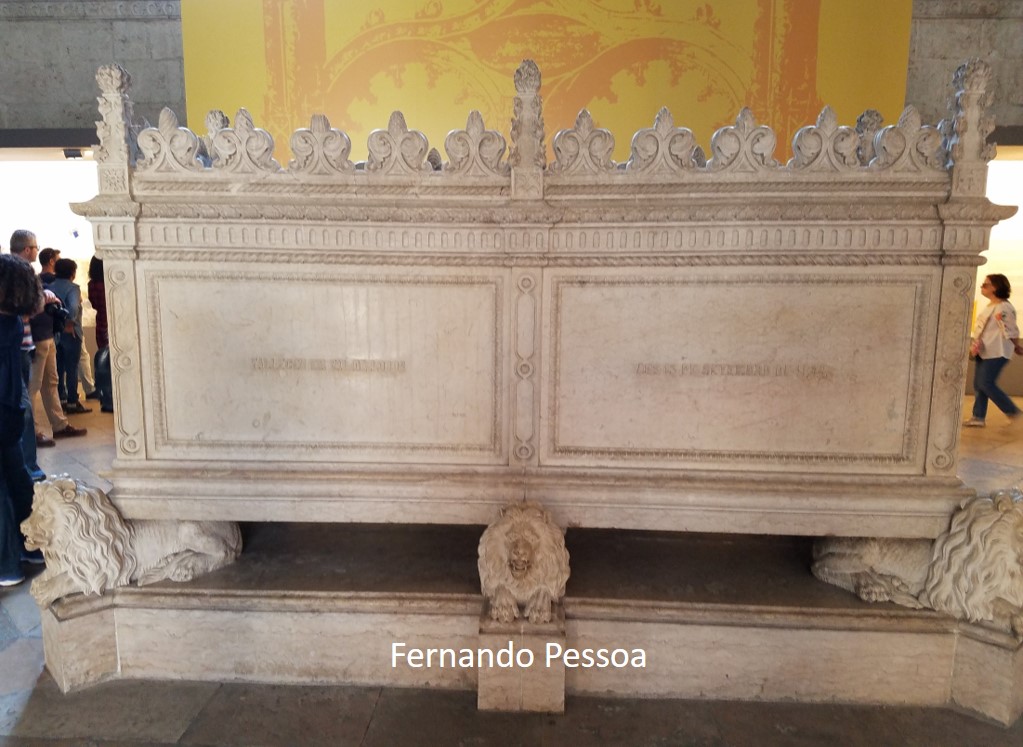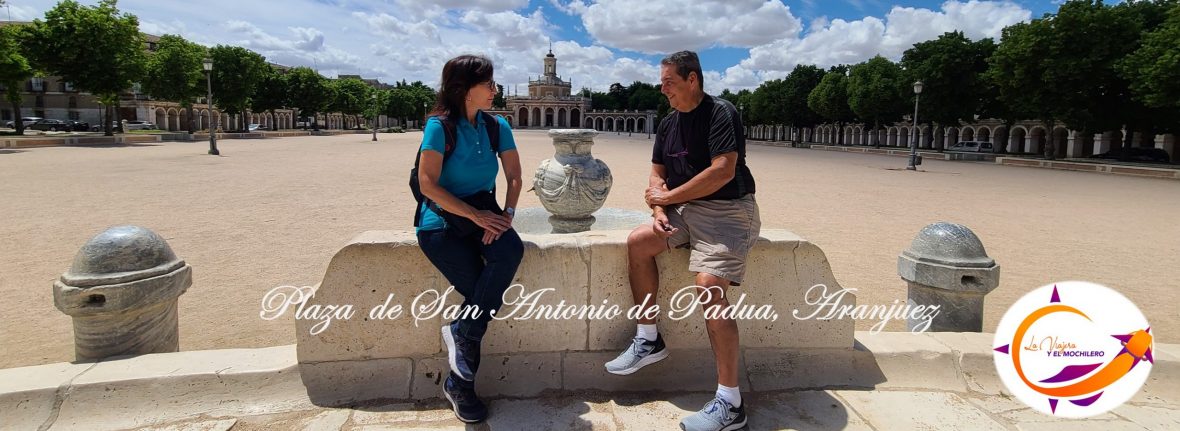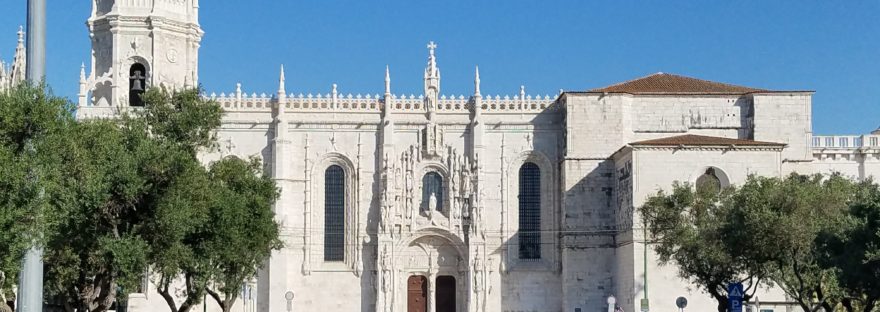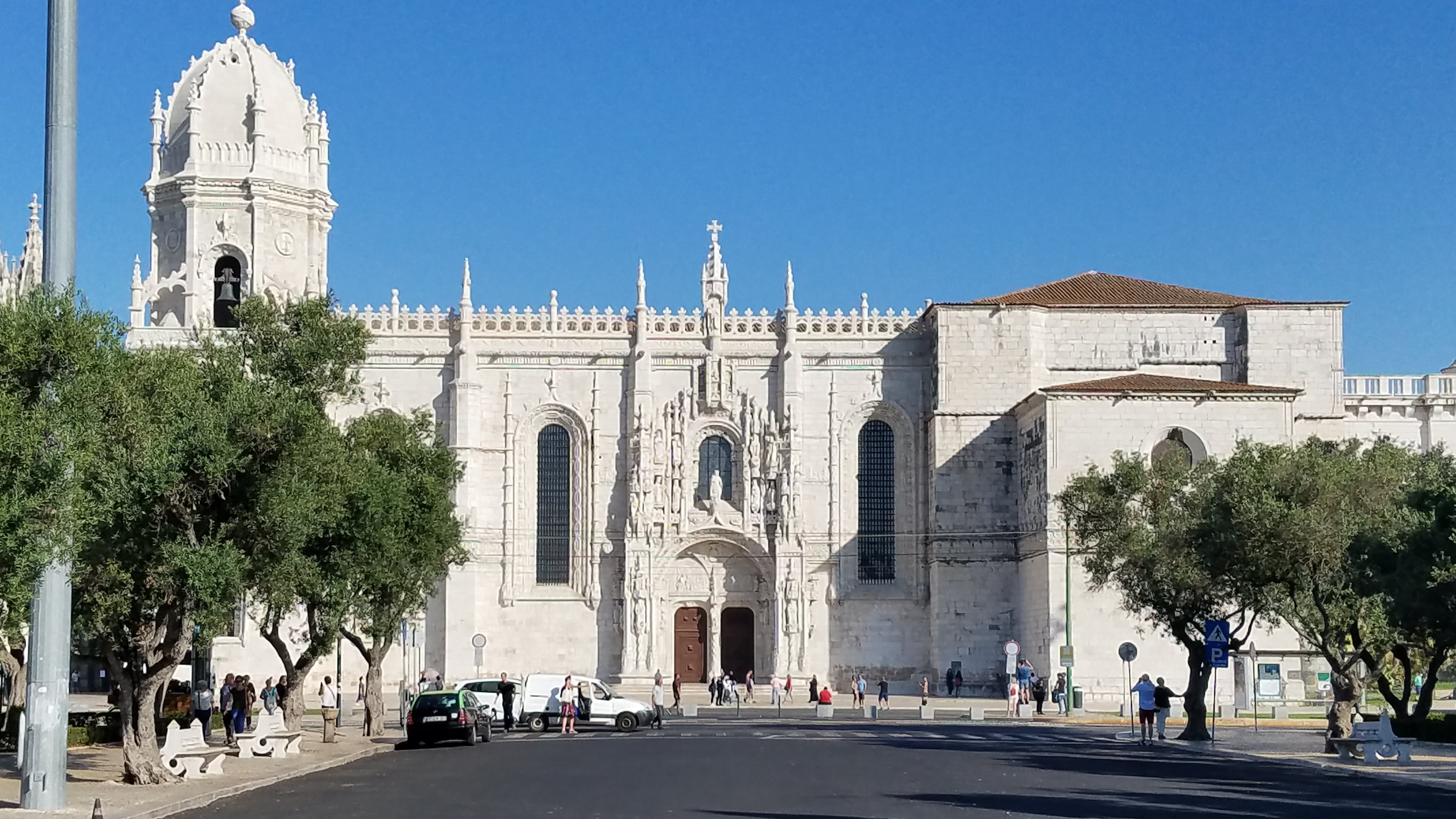 The “Jerónimos de Santa María de Belém” Monastery is an old monastery, which served in its beginnings as the residence of the monks of the religious order of “São Jerónimo” (Saint Jerome), which prevailed until 1834. The Monastery is located in the “Belém” Ward in Lisbon, Portugal and is an important representation of the “Manueline” architectural style, representing the richness and importance of the Portuguese Discoveries.
The “Jerónimos de Santa María de Belém” Monastery is an old monastery, which served in its beginnings as the residence of the monks of the religious order of “São Jerónimo” (Saint Jerome), which prevailed until 1834. The Monastery is located in the “Belém” Ward in Lisbon, Portugal and is an important representation of the “Manueline” architectural style, representing the richness and importance of the Portuguese Discoveries. 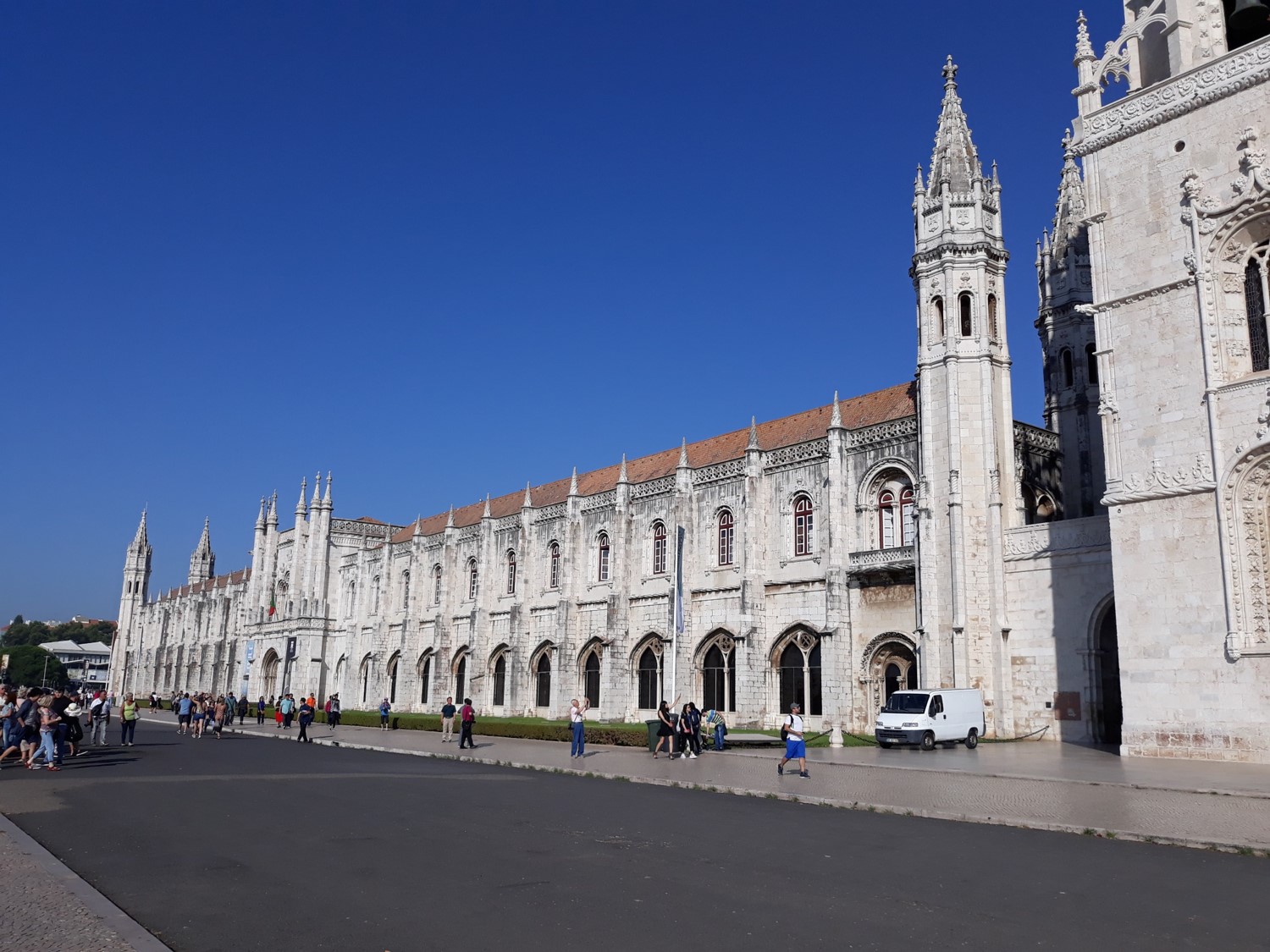 Art critics consider this monastery as the jewel of the “Manueline” style and one of the most important monuments of Lisbon as well as Portugal. Since the nineteenth century, it is the state’s patrimony, once the liberal government is installed and the religious orders are dismantled.
Art critics consider this monastery as the jewel of the “Manueline” style and one of the most important monuments of Lisbon as well as Portugal. Since the nineteenth century, it is the state’s patrimony, once the liberal government is installed and the religious orders are dismantled.
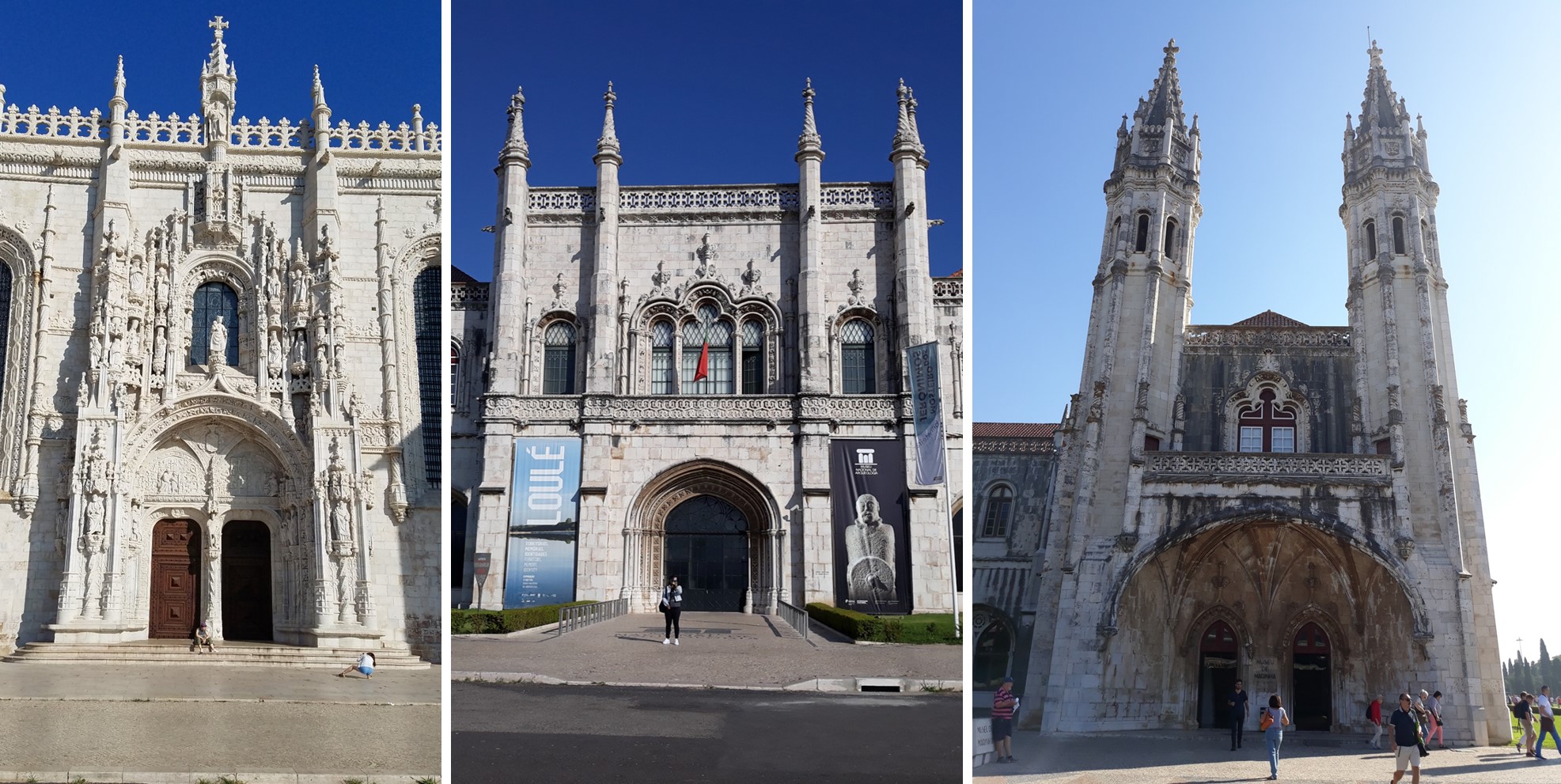
Designed in the “Manueline” style by the architect “Juan de Castillo”, it was commissioned by King Manuel I of Portugal to commemorate the fortunate return of Vasco de Gama’s voyage to India. It was founded in 1501 on the enclave of the Hermitage of “Restelo” in what was the beach of “Restelo”, chapel founded by “Enrique” the Navigator, and in which, “Vasco de Gama” and his men spent the night in prayer before leaving for India .
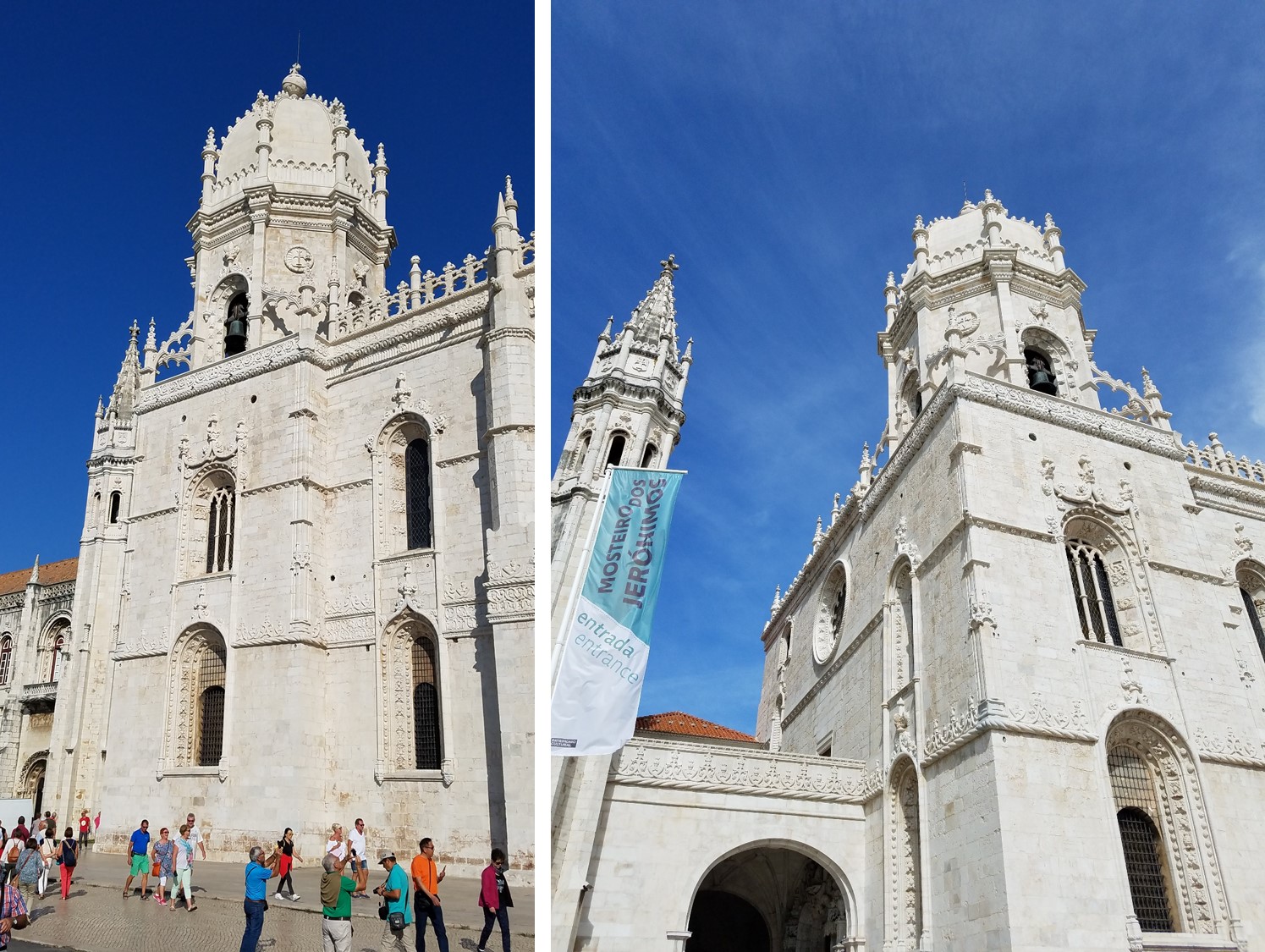
The first construction stage of the new church began in 1514 and has been subject to expantions and modifications through the twentieth century. It was financed thanks to 5% of the taxes on oriental spices, except for the spices of pepper, cinnamon and cloves, which income went directly to the Crown.
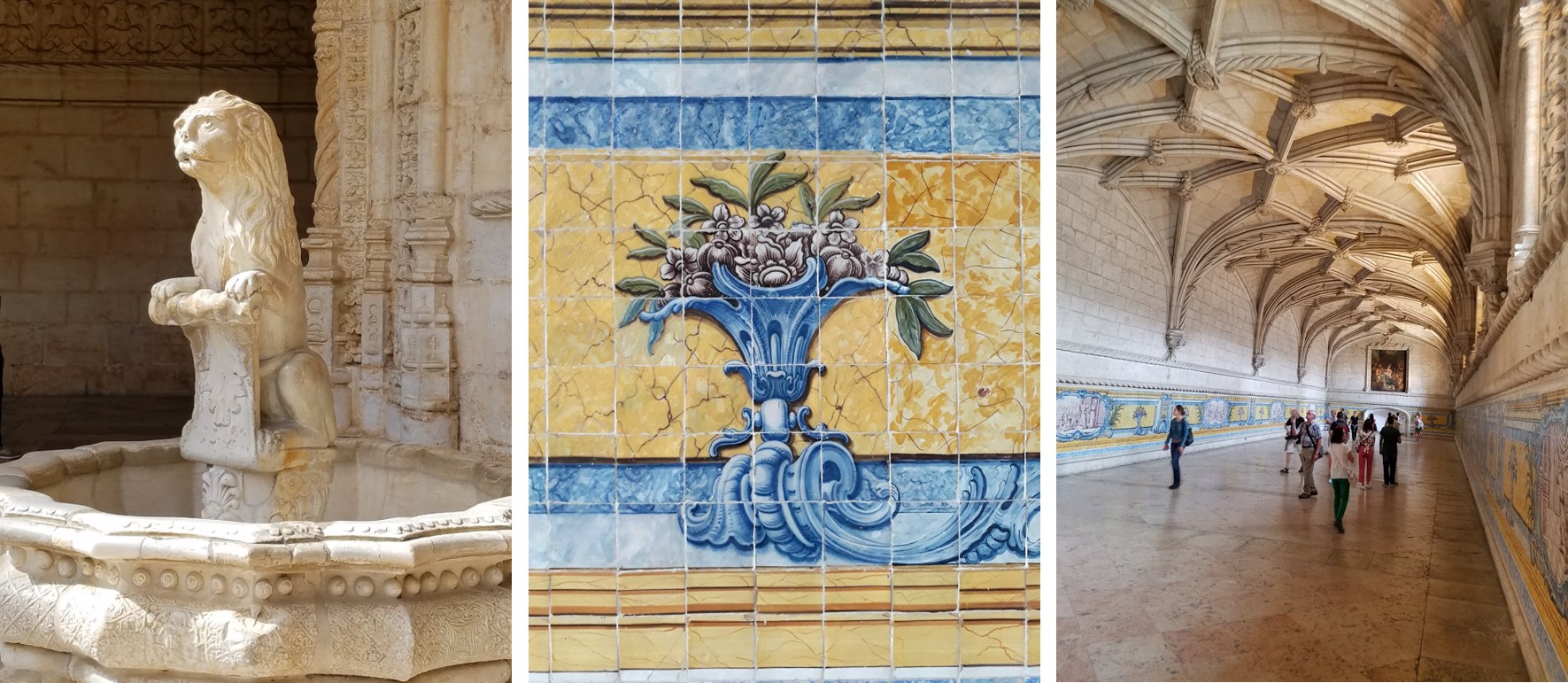
The “Manueline” style is characterized by a mixture of architectural and decorative motifs from Late Gothic and Renaissance. The main and lateral portals, the interior of the church and the magnificent cloister stand out. It was completed in the 16th century, although the western wing and the bell tower were not completed until the 19th century.

We were very impressed by the monumental size of the cloister. Its obviously “Manueline” decoration, full of maritime and navigation elements which highlights the style’s commemorative origin, as well as the letter “M”, symbol of that style. The central patio of the cloister was recently restored. From the second floor of the cloister you can access the upper part of the church and the tomb of “Fernando Pessoa”.
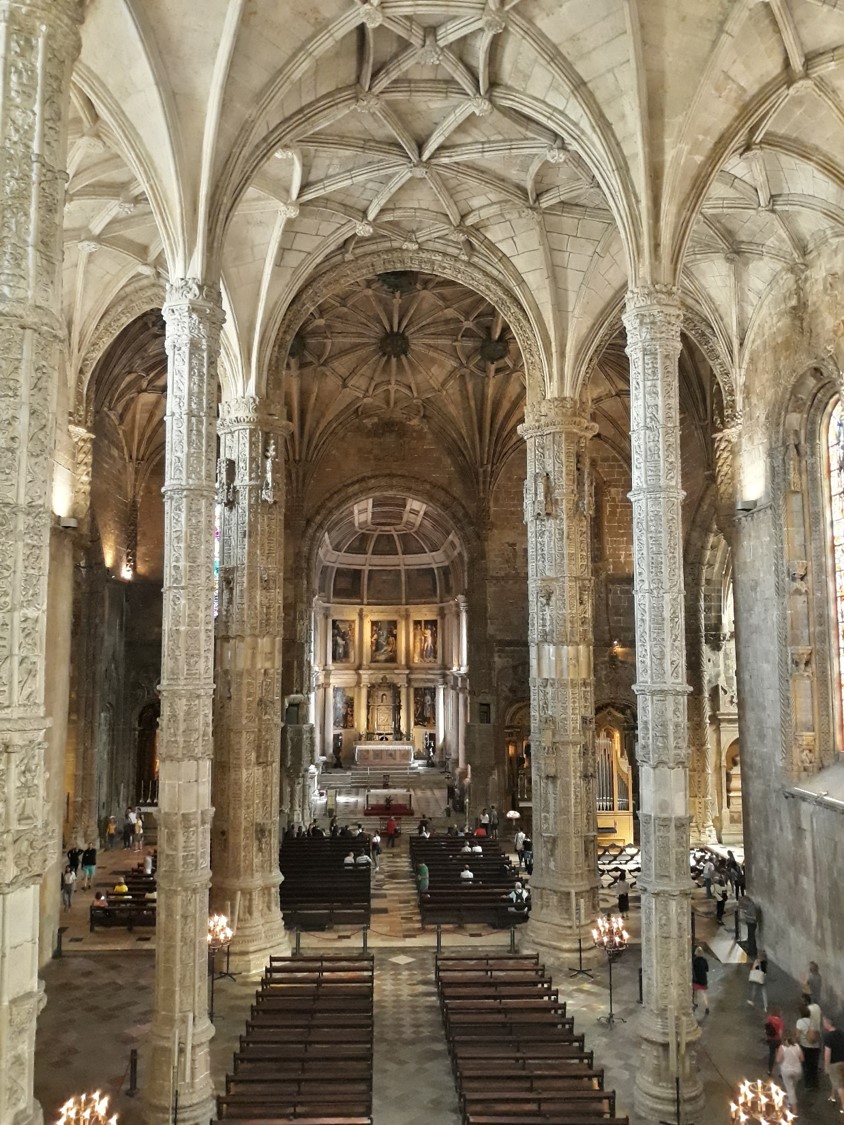
The Church of the “Jerónimos” Monastery has a very spacious and bright interior. It consists of a single nave with six perfectly carved columns that seem to be endless. The vault of the transept is great and covers an area of 29 x 19 meters, without central supports and with a complex network of ribs. It was designed by “Juan de Castillo” in 1522. The vault of the nave also designed Castillo was built in 1520.
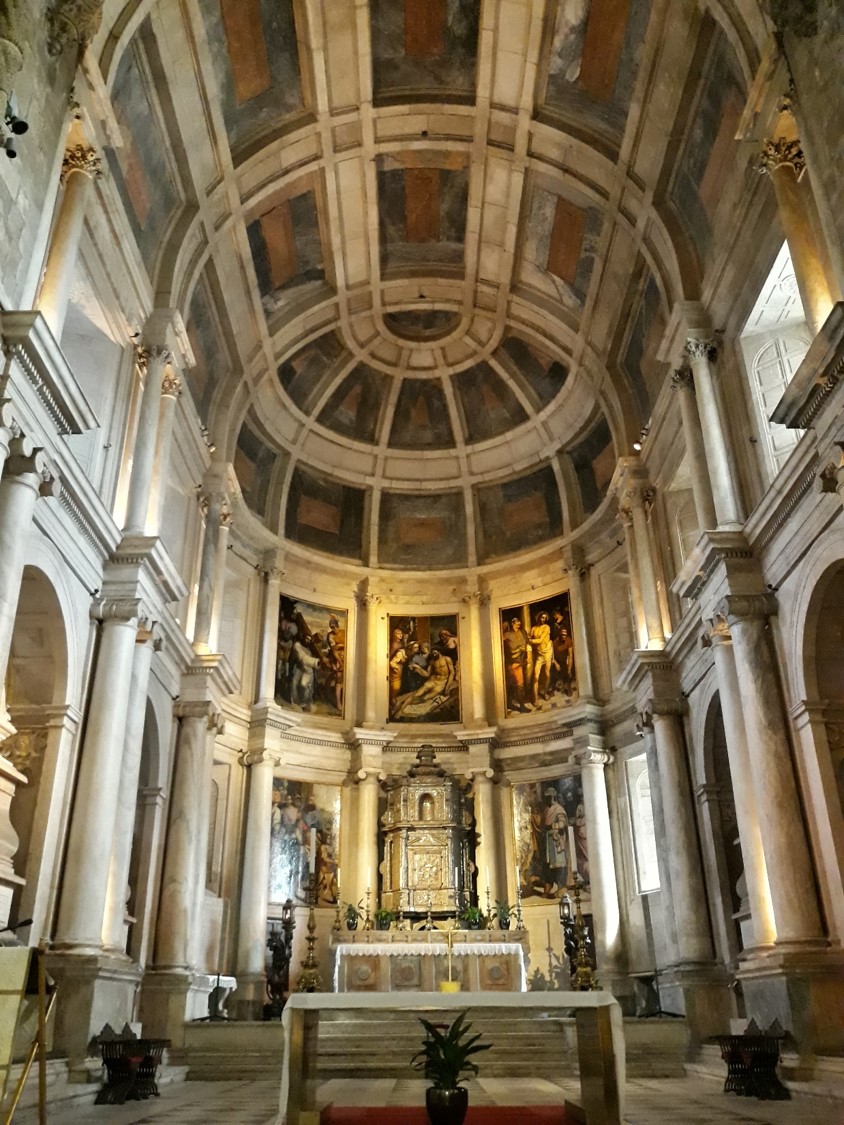
The main chapel was restructured in 1571 by master builder “Jerónimo Ruão” following the traces provided by “Diogo de Torralva” in an advanced Renaissance style, in the same style as the main chapel of the church of the monastery of “El Escorial”. The altarpiece incorporates a series of panel paintings by “Lourenço de Salzedo” and a monumental tabernacle of the seventeenth century. In this chapel are the tombs of King Manuel I and his wife María and Juan III and Catalina de Austria supported on elephants .
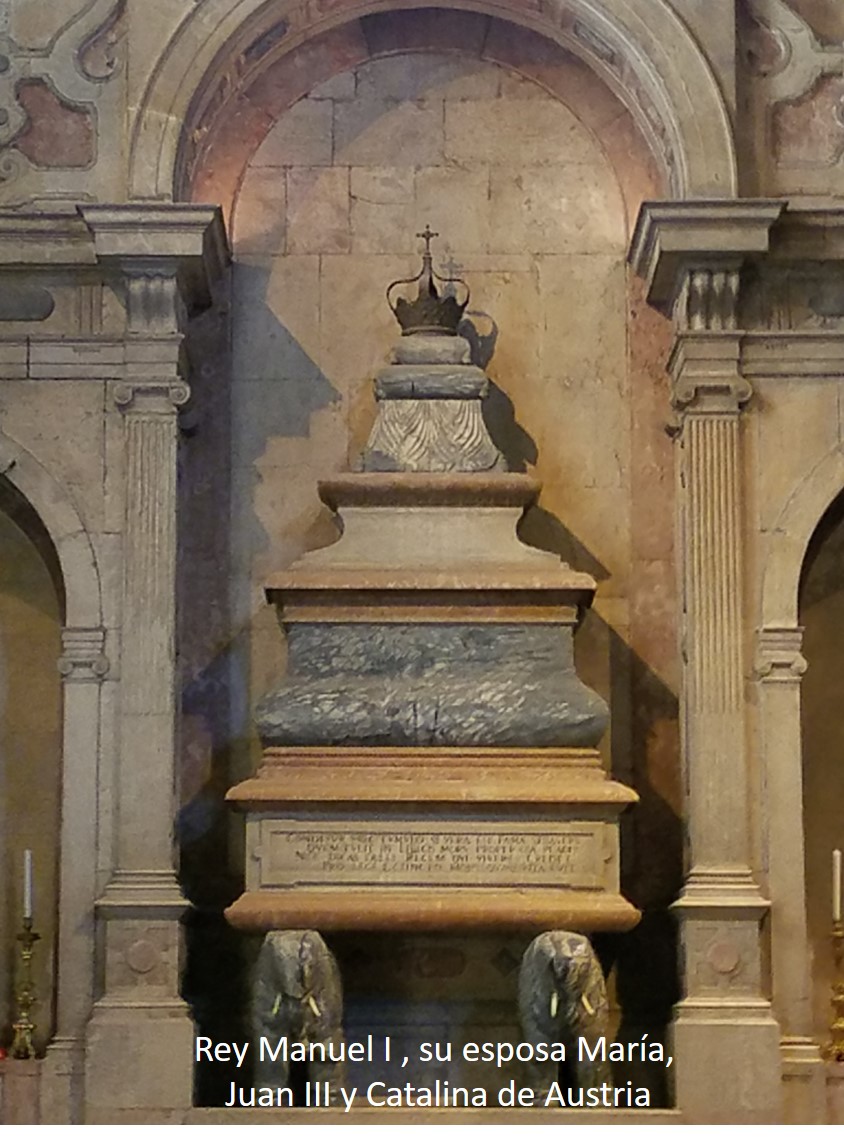
The most important tourist attractions of “Los Jerónimos” are the tombs of the “Vasco de Gama” navigator and the poet “Luís de Camões”.
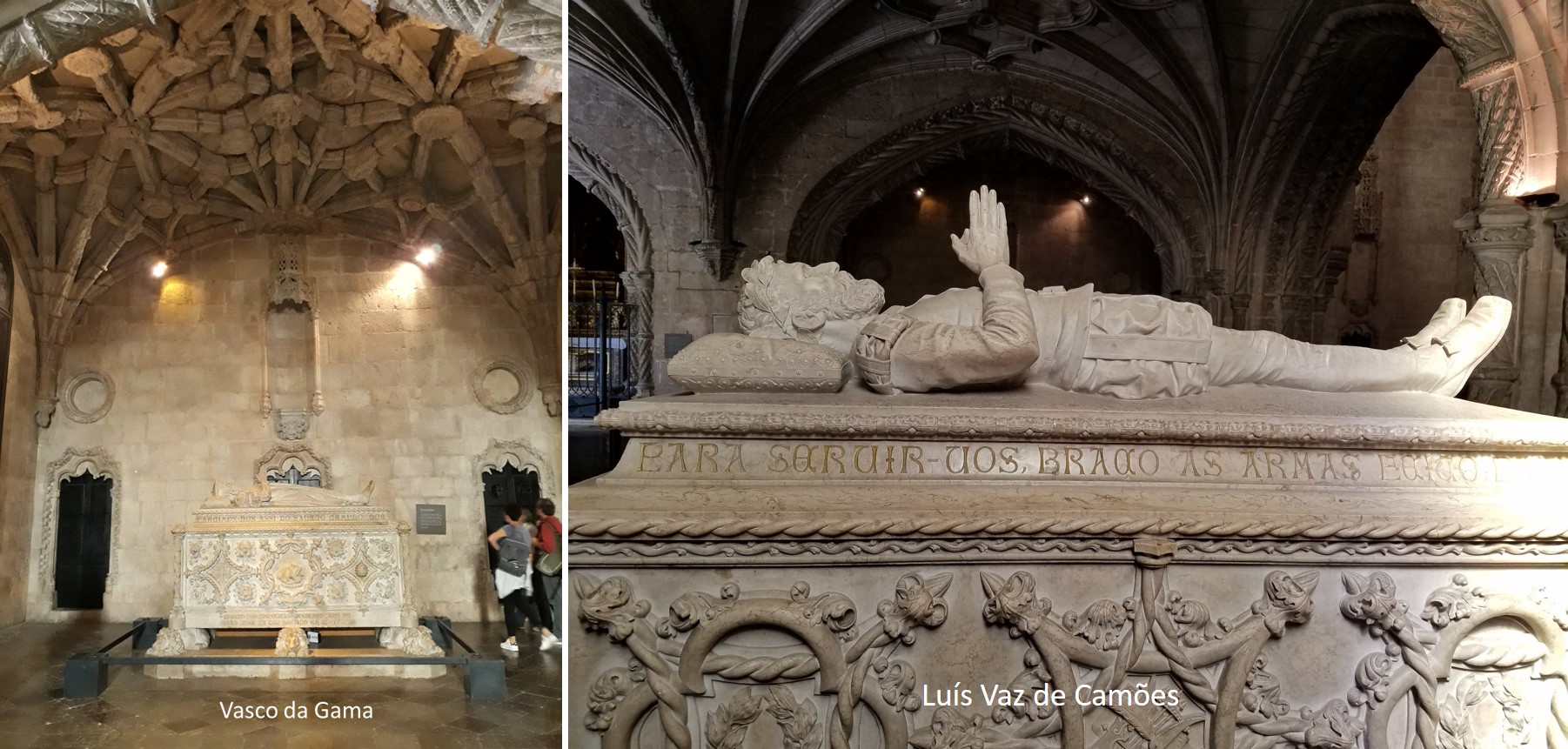
In a chapel of the cloister rest, since 1985, the remains of the writer “Fernando Pessoa”.
